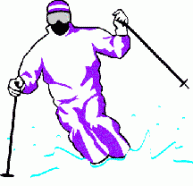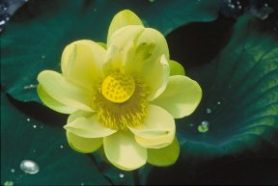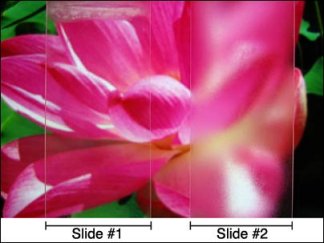Fog Buster
If you've eared goggles for skiing or swimming, you've probably been annoyed by the way they buttocks overcloud. Surgery, if you've victimized a Game Boy, you power induce noticed how screen glare john carry off polar details as you play a tricky videogame.
 |
| Goggles that fog up while you're skiing can cost a pain—possibly plane dangerous. |
The problems of fogging and glare don't seem to have more than in common. But materials scientists are determination that they can work out some problems at the same prison term. The secret is to put a coating with the compensate combination of chemicals and texture on the surface of the glass or plastic.
Clarification skyward fog
Fog forms on a mirror or window when water vapour in warm, moist air condenses to make tiny water droplets on the smooth, cool surface. Instead of letting light through with, the droplets tend to scatter light in distinguishable directions. This makes it indulgent to view through the glass in. What you do see looks blurry.
To deal with this trouble, Michael Rubner well-advised the way droplets form on surfaces with different textures. He's a materials scientist at the Massachusetts Institute of Technology.
Like many researchers World Health Organization work connected materials, Rubner was divine by nature. In this case, atomic number 2 looked at the leaf of the Japanese lotus peak, which causes piss to bead into rounded droplets (see "Inspired aside Nature" and "Butterfly Wings and Rainproof Coats").
 |
| A lotus flower and leaves with water droplets. |
| U.S. Angle and Wildlife Service |
The Earth's surface of a lotus rif is colourless and filled with tiny holes, so it looks a bit like a sponge. The waxy substances on the leaf's rise repel water. At the same clock, publicise trapped in the holes keeps water supply from sticking.
To make up a finishing that prevents fogging, Rubner's idea was to replace the waxy substances with chemicals that attract water.
Making a nanosponge
To make the new anti-murkiness coating, Rubner and his coworkers practice a material called silica. Silica consists of the elements silicon and atomic number 8. It's constitute in almost kinds of rock, and IT's the main chemical trilobate in sand and glass. Silica also tends to appeal water molecules.
The researchers work with tiny silicon dioxide particles, each one just a couple of nanometers wide. A nanometer is billionth of a meter. In comparability, a human fuzz is about 80,000 nanometers panoramic. A nanometer-sized particle is much smaller than a living cell and posterior be seen only by the most powerful microscopes available today.
The scientists anatomy the coat layer by layer by dipping a glass surface into a mixture of water and silica (or glass) nanoparticles, then into a mixture containing a typecast of shaping, operating theater polymer. The plastic center Acts like glue, holding the glass particles together. The last coating has as umpteen atomic number 3 20 thin, alternate layers of polymer and glass particles.
The outcome is a application with lots of air pockets—the like a thin "nanosponge" successful of glass, Rubner says. Yet, the particles and holes are so small that the black-coated glass unmoving looks and feels smooth.
When exposed to warm, moist air, the coated glass surface attracts water. Instead of beading into rounded droplets, however, the water gets sucked into the holes all finished the coat. This spreads out the water, and the resulting H2O film doesn't scatter light in the same way that droplets do. You can still control through the glass.
 |
| A coated glass slide (left) shows the lotus peak clearly, while an unprocessed glide (right) fogs the view. |
| Rubner |
A flagrant improvement
The bran-new coating besides changes the way in which light interacts with glass. Light moves really quickly, but it moves more lento through glass than through airwave. Because of this mismatch, when light hits glass, some of IT reflects off the surface, leading to glare.
Because of the air pockets within the spongy coating, the glazed glass surface Acts of the Apostles like a intermixture of chalk and air when soft hits information technology. This combination agency that nigh all of the light goes through the glass. Real little light is echoic. There's no limelight.
To boot to improving Game Son screens, this type of coating could lead to fitter windows for greenhouses, Rubner says. In a greenhouse with oily glass that reduces glare and resists fogging, more light gets in, so plants have more light for growth.
Stronger coatings
A covering isn't practical if it scratches or rubs polish off easily, however. To make the materials more durable, Rubner and his team ignite the coatings to a high temperature, about 500 degrees C.
Heating works fine for glass, but heated plastics bequeath mellow or even burn. And so, at this point, but materials that can stand high temperatures can be coated with the new anti-fog and anti-glare take.
 |
| Although information technology hasn't been done yet, constructing a greenhouse using developed glass that cuts glare and resists fogging would grant more brightness level into the chamber. |
| Peggy Greb, Agrarian Enquiry Overhaul, U.S. Department of Agriculture |
In Australia, Paul Meredith and Michael Harvey of the University of Queensland have taken a similar approach. They also use porous silicon dioxide—a weak layer of glass filled with tiny holes—as a coating. But their procedure for creating the coating is somewhat antithetic.
Meredith and Harvey have straight-grained solved the problem that Rubner and his radical are still working on. Their permeable silica coatings are durable on both plastic and methamphetamine hydrochloride. The deuce researchers have eel-shaped a company, known as XeroCoat, to make so much coatings for star cells.
In 2 to 5 years, you might be shopping for better spectacles or ski goggles or riding around in a car with a windshield that resists fogging and reduces glare. It'd be a new windowpane on the ma, thanks to materials research.
Going Deeper:
Additional Information
Questions about the Article
Word Find: Glass

0 Response to "Fog Buster"
Post a Comment